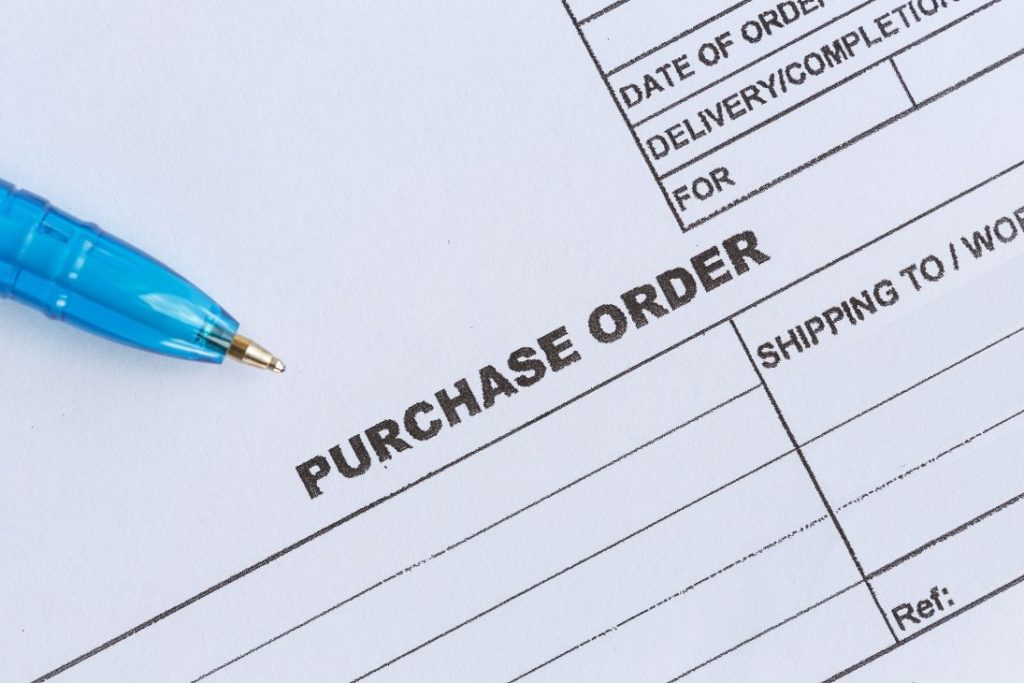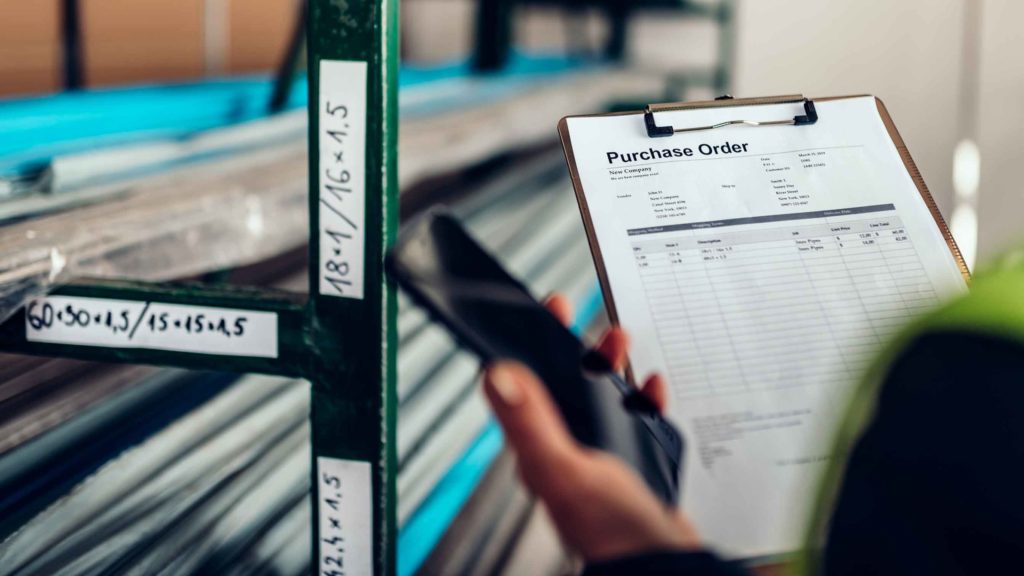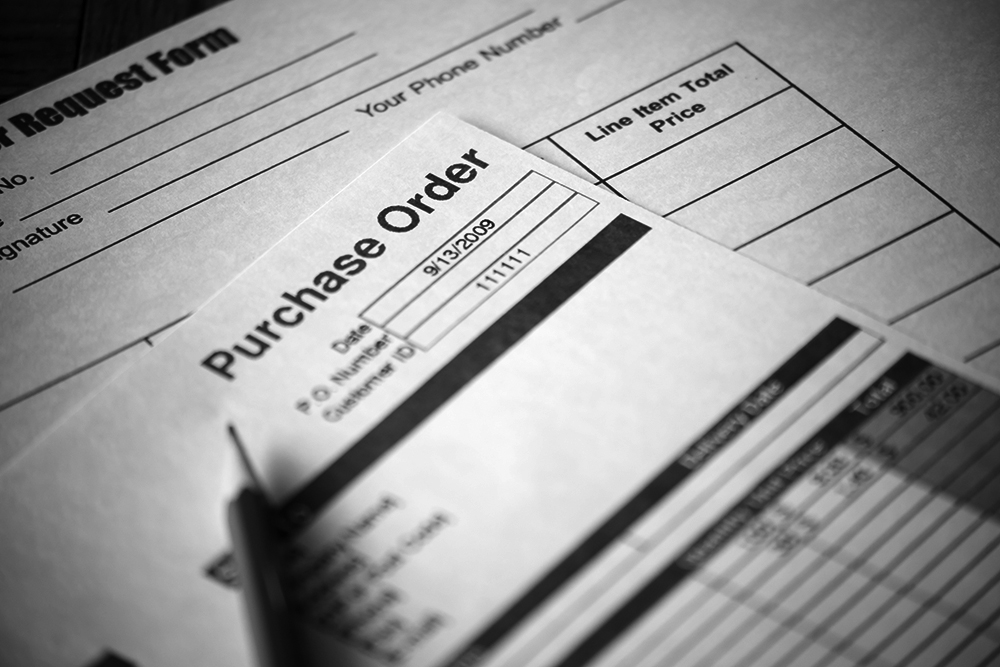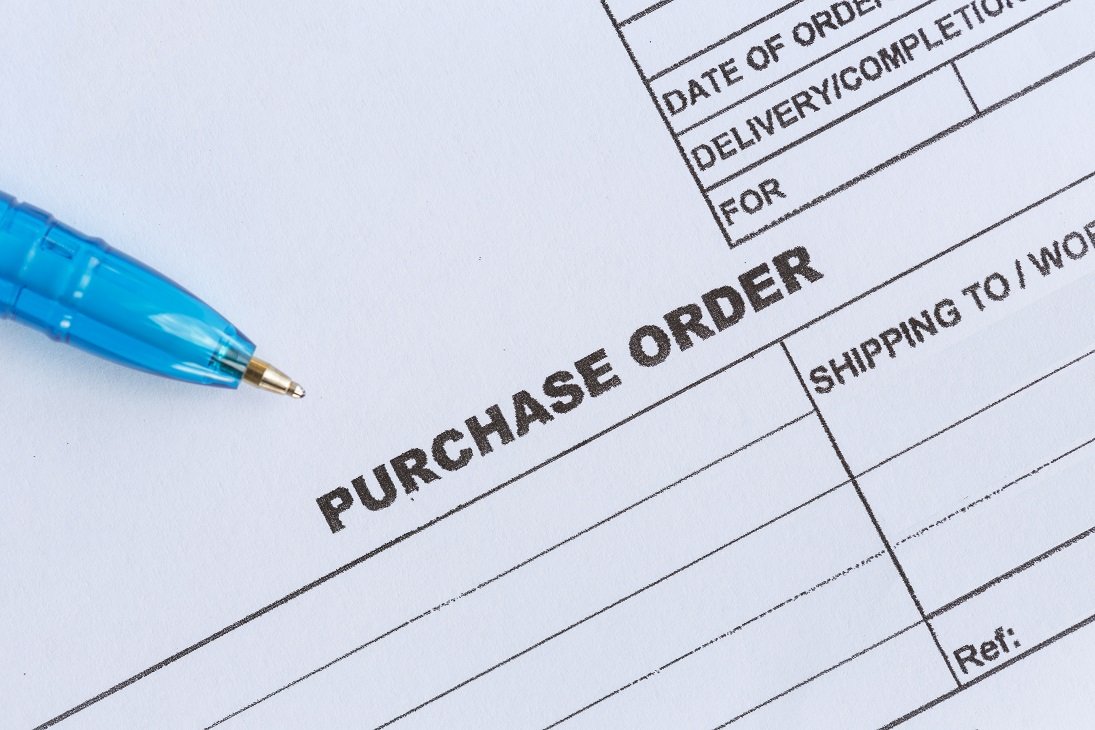Purchase order meaning
A purchase order, also known as PO, is a legal document that buyer sends to a vendor or supplier to authorize a purchase. Purchase orders outline what the buyer would like to purchase and the amount of the product they would like to receive. PO helps both the buyer and seller document their transactions.
By issuing purchase orders, small businesses can define what goods and services they need from their suppliers and when they need them. Purchase orders are useful for both the buyer and seller. The procurement process will move efficiently if you have a purchase order process in place. It maintains the operation of the small business organized. It also allows the seller to ensure they can provide the goods and services requested prior to committing to fulfillment, giving the buyer time to plan accordingly.
In addition, purchase orders can help the buyer and seller keep detailed and accurate records for financial statements and auditing.

Check out the Affidavit form for free
How does PO work?
Now let’s walk through the process of creating this type of document:
The buyer makes a decision to order items from the seller – The buyer must be able to identify a need that the seller’s product or service can fulfill before an order can be placed. During this stage, the buyer should identify what service or product is needed, if possible, the quantity they and date when they need it.
For instance, if you need to order new boxes to ship your product orders to customers, calculate how many boxes you need and when you need them.
Say you have an expected holiday rush coming up, you might look at last year’s box order and multiply it by your estimated growth this holiday season to order the proper amount.
Buyer drafts the document and sends it to the seller for approval – With the information mentioned above, the buyer should draft the document and send it to their seller for confirmation. When sending the document to a seller, signify when approval is needed to keep the process in a timely manner.
Once you have specified a seller that can provide your boxes, know how many boxes you need and when you will need them, you can draft your document using those details. Send to your point of contact or sales representative.
Seller reviews purchase order and affirm if they can fulfill the request – Once the seller receives the document, it is up to them to review the request and check inventory or availability to confirm if it can be completed by the date needed by the buyer.
In the case of the box shipment, the seller has reviewed your order and after reviewing their inventory and shipping capacity, they determine they are able to complete your request.
Approval of purchase order – If the seller can fulfill the request as advised by the buyer, they’ll approve the document making it legally binding for both parties. After it is figured out that the box company is able to complete your request, they send an approved copy of the order back to you to affirm.

Click here to get a free template of a buy and sale agreement.
Product or service completion – After the PO has been approved, the seller is responsible for providing the product or service as agreed upon. During this stage, they can also make and send an invoice to the buyer for the amount noted on the order. The invoice should summarize what goods were provided, in what quantity, and what is the amount owed.
For instance, after approving the shipment of boxes, you should receive the fulfilled order and an invoice for the amount owed. The seller will be expecting payment within thirty days of issuing the invoice.
Getting invoice paid – During this final stage, the buyer is responsible for paying the invoice according to the payment terms noted by the seller. Payment must be fulfilled according to, agreed-upon, payment terms.
What’s the right format for a purchase order?
The information you need to include in a document is as follows:
1) Header — Provide your company details, including the company name, business address, PO date, and order number.
2) Vendor information — Point out the proper recipient for the PO. This is where you list the name of the seller company, your particular contact’s name, and the address of the seller company.
3) Ship to — Specify where the order should be sent, what the shipping method is, what the shipping terms are, and the intended delivery date.
4) Order details — For each product included in the order, provide a line item with the product code or SKU number, description or item name, quantity of requested units, price per unit, and each item’s delivery date.
5) Summarize — Complete the purchase order by providing a subtotal, any applicable discounts, taxes, shipping costs, and grand total.
Purchase order types
There are four types of a purchase order, and they differ by how much information is included:
– Standard
– Planned
– Blanket
– Contract

Check out other free, useful templates.
Standard purchase order – This kind of document is the most widely used and recognized. On this occasion, the buyer is clear on the details of the purchase and can determine what item or service they are buying, the quantity, delivery timetable, and payment terms.
E.g.: a company that is running low on printer cartridges may place a standard purchase order because they know exactly how much they need and know when they need to have it.
Depending on your needs, standard purchase orders can be made for a number of various functions. For instance, the above template could be adjusted for:
– Services to be rendered
– Subcontracting
– Consignment
Planned purchase order – When placing a planned purchase order, a buyer is assessing the future needs of their company for the item in question by submitting a purchase order ahead. In this instance, details such as the item, price, and payment terms are known, but the quantity is based on an educated guess and the delivery date is uncertain.
E.g.: if the same company that is running low on printer cartridges places a planned purchase order, the buyer in charge would estimate how many printer cartridges they need with a more flexible delivery schedule.
Blanket purchase order – With this document, a buyer places multiple orders at one time to negotiate a lowered price.
E.g.: if the same company is able to negotiate a better deal by agreeing to place multiple orders of printer cartridges and paper from a single supplier, they would consider utilizing a blanket purchase order to obtain these items.
Contract purchase order – A contract purchase order is the most formal variation. On this occasion, the buyer and seller sign a contract outlining the terms of the purchase before a purchase order referencing the contract is issued. This type of purchase order offers the most legal protection for involved parties.
Companies would be under a contract purchase order agreement if they sign a contract with their supplier defining the items, quantity, pricing, and delivery timetable of the promised items that would be followed up with a standard purchase order.
Check out a free form of Girlfriend Application
Below you can download for free, template of a Purchase Order in excel format:

